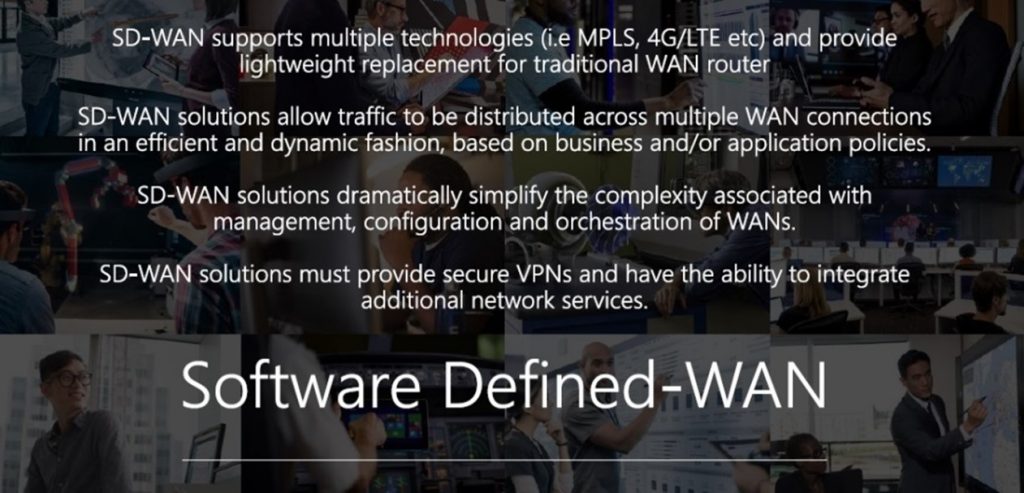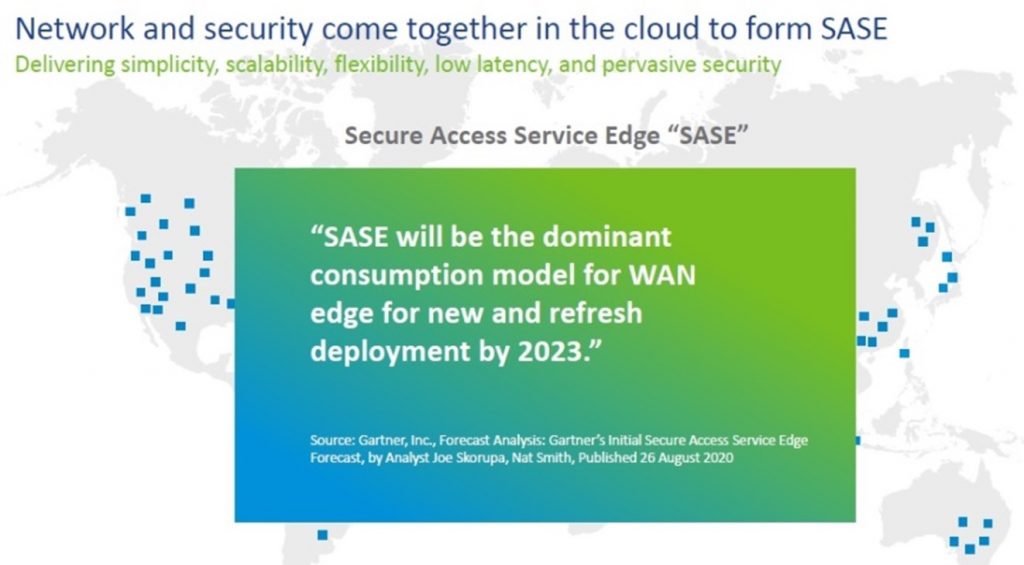The world is dynamic and constantly changing, irrespective of the current pandemic, and all industries now face the age of digital disruption. Therefore, to survive, companies are being driven to digitally transform. Various digital technologies and innovations have arisen from the pandemic, which is changing user behavior and experiences. Moreover, digital transformations have resulted in greater global interconnectedness and accelerated growth.
Digital transformation offers the most promising technological solutions for business continuity. Moving forward, Future Enterprise will emerge as an organization where all lines of operational activities will operate digitally, pushing organizations to innovate at a much faster pace than traditional businesses.
This is in line with the International Data Corporation (IDC) prediction that by 2022, the digital economy will become mainstream. At least 50% of Asia/Pacific GDP comes from digital products and services, highlighting the existence of recovery horizons amid the ongoing pandemic, particularly in the economic sector.
The recovery process will be gradual and marked by the conditions of the Southeast Asia region. In the final quarter of 2020, countries in the region showed a higher level of optimism, as vaccines were launched, infection rates in ASEAN had stabilized, and most economic activities in these countries had resumed. Most technological expenditure is focused on Cloud technology, analytics, automation/IoT, and productivity/communications and security applications.
In addition, this has caused numerous CEOs to change their main business agendas. According to a survey conducted by IDC Future Enterprise, “CEO Agendas: The Shift of Digital Deliveries in the Organization during the Pandemic, February 2021”, 55.6% of respondents planned to expand the reach of their business services by relying on the support of digital infrastructure.
In addition, 42.7% of respondents said they would maximize their use of technology to fortify their business operations, and 41.7% of respondents said they were adopting new approaches to connectivity (for example 5G) to allow for greater coverage. Finally, 38.9% of respondents explained they were using technology to achieve better customer engagement.
Therefore, the IDC has predicted that what the world currently needs is for companies to modernize their platforms. This prediction is driven by the increasing number of cybersecurity threats and the need for new functionality. The IDC estimates that, “up to 65% of organizations will aggressively modernize their old systems by investing more extensively in new technology platforms by 2023.”
Empower your Business with Confidence
There is a current data explosion, with an estimated 50 billion devices being connected to the internet in 2020 (Source: Cisco Networking Index). In fact, from 2020 onwards, the world of security systems will look much different.

The challenge companies face is that they are required to have integrated networks and security to serve customers, in their headquarters, branch offices, at home, and outside of the home. It is important to implement these measures, as customers’ work locations are no longer fixed to one spot, often moving around, meaning that they require internet access support anytime, anywhere.
This need has arisen in line with the increasing availability of remote work applications, simultaneously giving rise to various issues. Approximately 84% of remote users lose access to applications at least once a week, and an additional 11% stated that this occurs daily.

The issues above highlight that the rapid development of digital technology requires the use of new technologies, and more effective and efficient network planning management to develop digital-ready organizations and facilitate successful business activities.
One option for companies is offered by Software Defined Wide Area Network (SD-WAN) technology as a network solution that is agile, flexible, scalable, and consistent and secure in its operations. Using SD-WAN technology, companies can simplify remote branch connectivity management in a cost-effective manner using real-time applications.
SD-WAN is designed to accommodate the performance of a variety of leading cloud products on public enterprise applications, including video conferencing and desktop sharing. SD-WAN is the right choice for customers who desire more flexible bandwidth and the ability to rapidly instigate changes.
Moreover, customers also wish to maximize application performance and have greater visibility into the WAN. With SD-WAN, running application usage and how much bandwidth is being used can be viewed more accurately. Customers can offer branch location expansion and meet the growing volume of WAN traffic as it continues to increase in line with the available budget.
SD-WAN users can also utilize connectivity more efficiently and obtain more value from their bandwidth. In addition, using SD-WAN, users can align their network strategies with cloud adoption and digital initiatives, and view customer engagement. SD-WAN is also utilized to help customers transform their businesses and how they operate, as well as to reduce the complexity associated with deploying and managing WAN. SD-WAN is used for greater access and full control over entire networks from a convenient centralized location.
Digiserve (formerly known as Telkomtelstra) utilizes high-performance WANs, internet-based cloud applications, and hybrid WANs to simplify implementation, reduce costs, and ensure the company’s performance. With organizations’ increasing need for flexibility in connecting company networks between various branch offices without having to install various expensive specialized devices, the implementation of SD-WAN will continue to grow.
Along with the increasing need for companies to have strong, reliable, and secure networks for the operation of geographically diverse branch networks, Digiserve’s cloud-based SD-WAN has been proven to provide the best network solutions to address the challenges faced. This includes SASE, a WAN model that will be deployed in 2023 (Source: Gartner, Inc., Forecast Analysis: Gartner’s Initial Secure Access Service Edge Forecast, by Analyst Joe Skorupa, Nat Smith. Published 26 August 2020).

The key to its implementation lies in companies’ commitment to aligning their strategy to accommodate all IT changes. If this can be achieved, companies will be able to more than double their revenue growth, retention, and profits compared to companies that do not implement or only partially execute strategies in their IT landscapes.
Digiserve offers SD-WAN service solutions that have been implemented in several cross-industry sectors in Indonesia. By using SD-WAN, companies can efficiently utilize bandwidth to overcome high operational costs, and facilitate installation and management in all organizational entities, including remote branch offices.
By using multiple network paths, enjoy increased business performance and the agility of your IT department. The solution offers end-to-end transformation management (architecture, installation, and operations) of your WAN enterprise, without compromising the security and privacy of your network.


